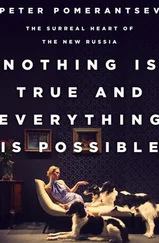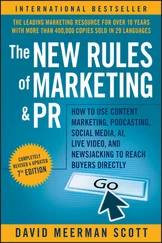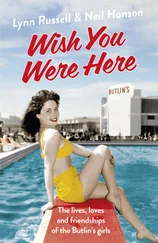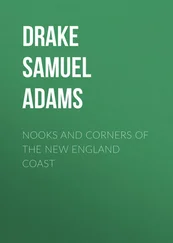Timothy Ferriss - The 4-Hour Workweek - Escape 9–5, Live Anywhere, and Join the New Rich - Expanded and Updated
Здесь есть возможность читать онлайн «Timothy Ferriss - The 4-Hour Workweek - Escape 9–5, Live Anywhere, and Join the New Rich - Expanded and Updated» весь текст электронной книги совершенно бесплатно (целиком полную версию без сокращений). В некоторых случаях можно слушать аудио, скачать через торрент в формате fb2 и присутствует краткое содержание. Жанр: Прочая научная литература, на английском языке. Описание произведения, (предисловие) а так же отзывы посетителей доступны на портале библиотеки ЛибКат.
- Название:The 4-Hour Workweek: Escape 9–5, Live Anywhere, and Join the New Rich - Expanded and Updated
- Автор:
- Жанр:
- Год:неизвестен
- ISBN:нет данных
- Рейтинг книги:3 / 5. Голосов: 1
-
Избранное:Добавить в избранное
- Отзывы:
-
Ваша оценка:
- 60
- 1
- 2
- 3
- 4
- 5
The 4-Hour Workweek: Escape 9–5, Live Anywhere, and Join the New Rich - Expanded and Updated: краткое содержание, описание и аннотация
Предлагаем к чтению аннотацию, описание, краткое содержание или предисловие (зависит от того, что написал сам автор книги «The 4-Hour Workweek: Escape 9–5, Live Anywhere, and Join the New Rich - Expanded and Updated»). Если вы не нашли необходимую информацию о книге — напишите в комментариях, мы постараемся отыскать её.
The 4-Hour Workweek: Escape 9–5, Live Anywhere, and Join the New Rich - Expanded and Updated — читать онлайн бесплатно полную книгу (весь текст) целиком
Ниже представлен текст книги, разбитый по страницам. Система сохранения места последней прочитанной страницы, позволяет с удобством читать онлайн бесплатно книгу «The 4-Hour Workweek: Escape 9–5, Live Anywhere, and Join the New Rich - Expanded and Updated», без необходимости каждый раз заново искать на чём Вы остановились. Поставьте закладку, и сможете в любой момент перейти на страницу, на которой закончили чтение.
Интервал:
Закладка:
Thank you for understanding this move to more efficiency and effectiveness. It helps me accomplish more to serve you better.
Sincerely,
Tim Ferriss
MOVE TO ONCE-PER-DAY as quickly as possible. Emergencies are seldom that. People are poor judges of importance and inflate minutiae to fill time and feel important. This autoresponse is a tool that, far from decreasing collective effectiveness, forces people to re-evaluate their reason for interrupting you and helps them decrease meaningless and time-consuming contact.
I was initially terrified of missing important requests and inviting disaster, just as you might be upon reading this recommendation. Nothing happened. Give it a shot and work out the small bumps as you progress.
For an extreme example of a personal autoresponder that has never prompted a complaint and allowed me to check e-mail once per week, send an e-mail to template@fourhourworkweek.com. It has been revised over three years and works like a charm.
The second step is to screen incoming and limit outgoing phone calls.
1. Use two telephone numbers if possible—one office line (non urgent) and one cellular (urgent). This could also be two cell phones, or the non-urgent line could be an Internet phone number that routes calls to online voicemail (www.skype.com, for example).
Use the cell number in the e-mail autoresponse and answer it at all times unless it is an unknown caller or it is a call you don’t want to answer. If in doubt, allow the call to go to voicemail and listen to the voicemail immediately afterward to gauge importance. If it can wait, let it wait. The offending parties have to learn to wait.
The office phone should be put on silent mode and allowed to go to voicemail at all times. The voicemail recording should sound familiar:
You’ve reached the desk of Tim Ferriss.
I am currently checking and responding to voicemail twice daily at 12:00 p.m. ET [or your time zone] and 4:00 p.m. ET.
If you require assistance with a truly urgent matter that cannot wait until either 12:00 p.m. or 4:00 p.m., please contact me on my cell at 555–555–5555. Otherwise, please leave a message and I will return it at the next of those two times. Be sure to leave your e-mail address, as I am often able to respond faster that way.
Thank you for understanding this move to more efficiency and effectiveness. It helps me accomplish more to serve you better.
Have a wonderful day.
2. If someone does call your cell phone, it is presumably urgent and should be treated as such. Do not allow them to consume time otherwise. It’s all in the greeting. Compare the following:
Jane(receiver) :Hello?
John(caller) :Hi, is this Jane?
Jane:This is Jane.
John:Hi, Jane, it’s John.
Jane:Oh, hi, John. How are you? (or) Oh, hi, John. What’s going on?
John will now digress and lead you into a conversation about nothing, from which you will have to recover and then fish out the ultimate purpose of the call. There is a better approach:
Jane:This is Jane speaking.
John:Hi, it’s John.
Jane:Hi, John. I’m right in the middle of something. How can I help you out?
Potential continuation:
John:Oh, I can call back.
Jane:No, I have a minute. What can I do for you?
Don’t encourage people to chitchat and don’t let them chitchat. Get them to the point immediately. If they meander or try to postpone for a later undefined call, reel them in and get them to come to the point. If they go into a long description of a problem, cut in with, “[Name], sorry to interrupt, but I have a call in five minutes. What can I do to help out?” You might instead say, “[Name], sorry to interrupt, but I have a call in five minutes. Can you send me an e-mail?”
The third step is to master the art of refusal and avoiding meetings.
THE FIRST DAY our new Sales VP arrived at TrueSAN in 2001, he came into the all-company meeting and made an announcement in just about this many words: “I am not here to make friends. I have been hired to build a sales team and sell product, and that’s what I intend to do. Thanks.” So much for small talk.
He proceeded to deliver on his promise. The office socializers disliked him for his no-nonsense approach to communication, but everyone respected his time. He wasn’t rude without reason, but he was direct and kept the people around him focused. Some didn’t consider him charismatic, but no one considered him anything less than spectacularly effective.
I remember sitting down in his office for our first one-on-one meeting. Fresh off four years of rigorous academic training, I immediately jumped into explaining the prospect profiles, elaborate planning I’d developed, responses to date, and so forth and so on. I had spent at least two hours preparing to make this first impression a good one. He listened with a smile on his face for no more than two minutes and then held up a hand. I stopped. He laughed in a kind-hearted manner and said, “Tim, I don’t want the story. Just tell me what we need to do.”
Over the following weeks, he trained me to recognize when I was unfocused or focused on the wrong things, which meant anything that didn’t move the top two or three clients one step closer to signing a purchase order. Our meetings were now no more than five minutes long.
From this moment forward, resolve to keep those around you focused and avoid all meetings, whether in person or remote, that do not have clear objectives. It is possible to do this tactfully, but expect that some time wasters will be offended the first few times their advances are rejected. Once it is clear that remaining on task is your policy and not subject to change, they will accept it and move on with life. Hard feelings pass. Don’t suffer fools or you’ll become one.
It is your job to train those around you to be effective and efficient . No one else will do it for you. Here are a few recommendations:
1. Decide that, given the non-urgent nature of most issues, you will steer people toward the following means of communication, in order of preference: e-mail, phone, and in-person meetings. If someone proposes a meeting, request an e-mail instead and then use the phone as your fallback offer if need be. Cite other immediately pending work tasks as the reason.
2. Respond to voicemail via e-mail whenever possible. This trains people to be concise. Help them develop the habit.
Similar to our opening greeting on the phone, e-mail communication should be streamlined to prevent needless back-and-forth. Thus, an e-mail with “Can you meet at 4:00 P.M.?” would become “Can you meet at 4:00 P.M.? If so If not, please advise three other times that work for you.”
This “if … then” structure becomes more important as you check e-mail less often. Since I only check e-mail once a week, it is critical that no one needs a “what if?” answered or other information within seven days of a given e-mail I send. If I suspect that a manufacturing order hasn’t arrived at the shipping facility, for example, I’ll send an e-mail to my shipping facility manager along these lines: “Dear Susan … Has the new manufacturing shipment arrived? If so, please advise me on … If not, please contact John Doe at 555–5555 or via e-mail at john@doe.com (he is also CC’d) and advise on delivery date and tracking. John, if there are any issues with the shipment, please coordinate with Susan, reachable at 555–4444, who has the authority to make decisions up to $500 on my behalf. In case of emergency, call me on my cell phone, but I trust you two. Thanks.” This prevents most follow-up questions, avoids two separate dialogues, and takes me out of the problem-solving equation.
Читать дальшеИнтервал:
Закладка:
Похожие книги на «The 4-Hour Workweek: Escape 9–5, Live Anywhere, and Join the New Rich - Expanded and Updated»
Представляем Вашему вниманию похожие книги на «The 4-Hour Workweek: Escape 9–5, Live Anywhere, and Join the New Rich - Expanded and Updated» списком для выбора. Мы отобрали схожую по названию и смыслу литературу в надежде предоставить читателям больше вариантов отыскать новые, интересные, ещё непрочитанные произведения.
Обсуждение, отзывы о книге «The 4-Hour Workweek: Escape 9–5, Live Anywhere, and Join the New Rich - Expanded and Updated» и просто собственные мнения читателей. Оставьте ваши комментарии, напишите, что Вы думаете о произведении, его смысле или главных героях. Укажите что конкретно понравилось, а что нет, и почему Вы так считаете.












